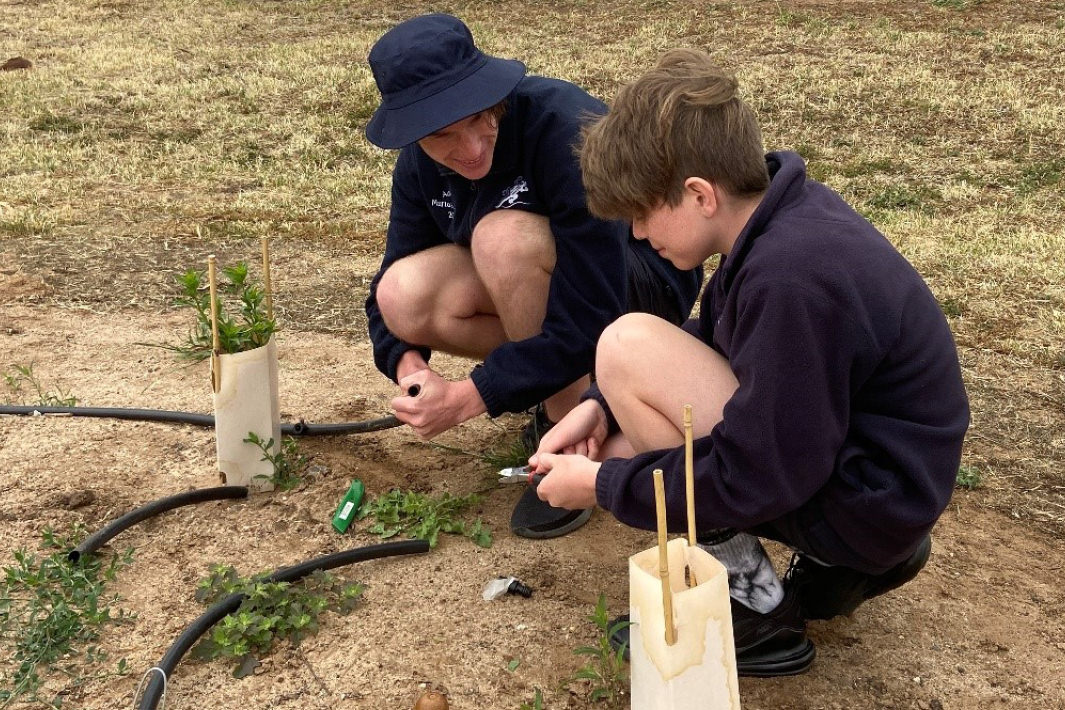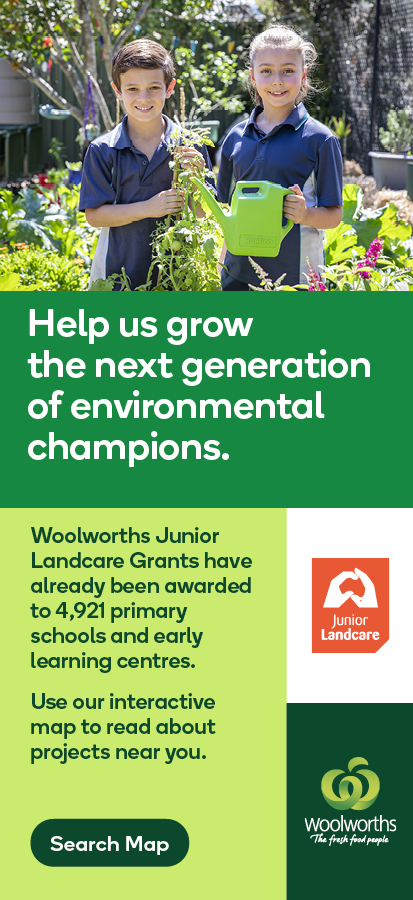CASE STUDY

Age Groups: 13-18
Grant Name:
School: Murtoa College
Grant Sponsor: Department of Energy, Environment and Climate Action
Project Overview
Murtoa College is part of a small wheat belt town in the Wimmera, 300 kilometres north-west of Melbourne. The school owns a wetland system that was facing several environmental issues with the area around it an open paddock containing very little biodiversity. The school wanted to improve the biodiversity of this area by propagating and planting a variety of native plants, to encourage animal life back to the wetland and enhance its water quality.
Armed with a Victorian Junior Landcare and Biodiversity Grant of nearly $5,000, they were able to implement their project as part of an environmental science unit for Year 9/10 students. This unit focuses on raising student awareness about the environment and how they can act locally to improve sustainability and environmental health.
Environmental Outcomes
The area where the garden was planted was previously overrun by weeds in winter and dry ground in summer. In making the plant selection, consideration was given to using a wide variety of plants, some of which are a food source for birds, and others for insects. Once the garden is more established, it will also be a habitat for a much wider variety of organisms. Plants used consisted mainly of larger trees, which will also increase the biodiversity and habitat of the area.
Educational Outcomes
This project enabled students to learn about biodiversity and sustainability in a practical, hands-on way by planning and building the garden as well as visiting another school and a local permaculture farm to learn about gardening techniques and sustainability. They were positively impacted and inspired by what another school was doing to increase biodiversity and improve the natural environment.
Students needed to organise most of the logistics of the garden project, for example present their proposal for the garden to the school leadership team. This increased their knowledge of how projects are implemented, and improved their confidence in public speaking.
Community and Social Outcomes
The project led to an increased dialogue and cooperation between the school and the community group responsible for Rabl Park, the project location. This will encourage cooperation in future plantings, at school and in the community, helping to build stronger relationships between like-minded people who are eager to improve the natural habitat of this community.
Lessons learnt
The big lesson that the school learned was that it is important not to attempt too many projects all at once. At the beginning of the 2019, they had plans for several other biodiversity and environmental projects at the same time, but found that it was much better to focus on one project and to do it well, rather than do several projects and not be able to finish any of them.
Conclusion
In addition to improving the school’s biodiversity, the project helped the students who participated and will impact other students in a much wider range of curriculum areas in the future, as they use the garden and outdoor classroom space for general learning, as well as more focused studies in science, agriculture and outdoor education.
From student feedback, their favourite part was landscaping and preparing the garden for planting. This involved a mix of practical work and social interaction, which the 44 students who participated really enjoyed. They also enjoyed seeing the fruits of their labour so clearly at the end of this phase.
 Teachers & Educators
Teachers & Educators Youth or Community Groups
Youth or Community Groups